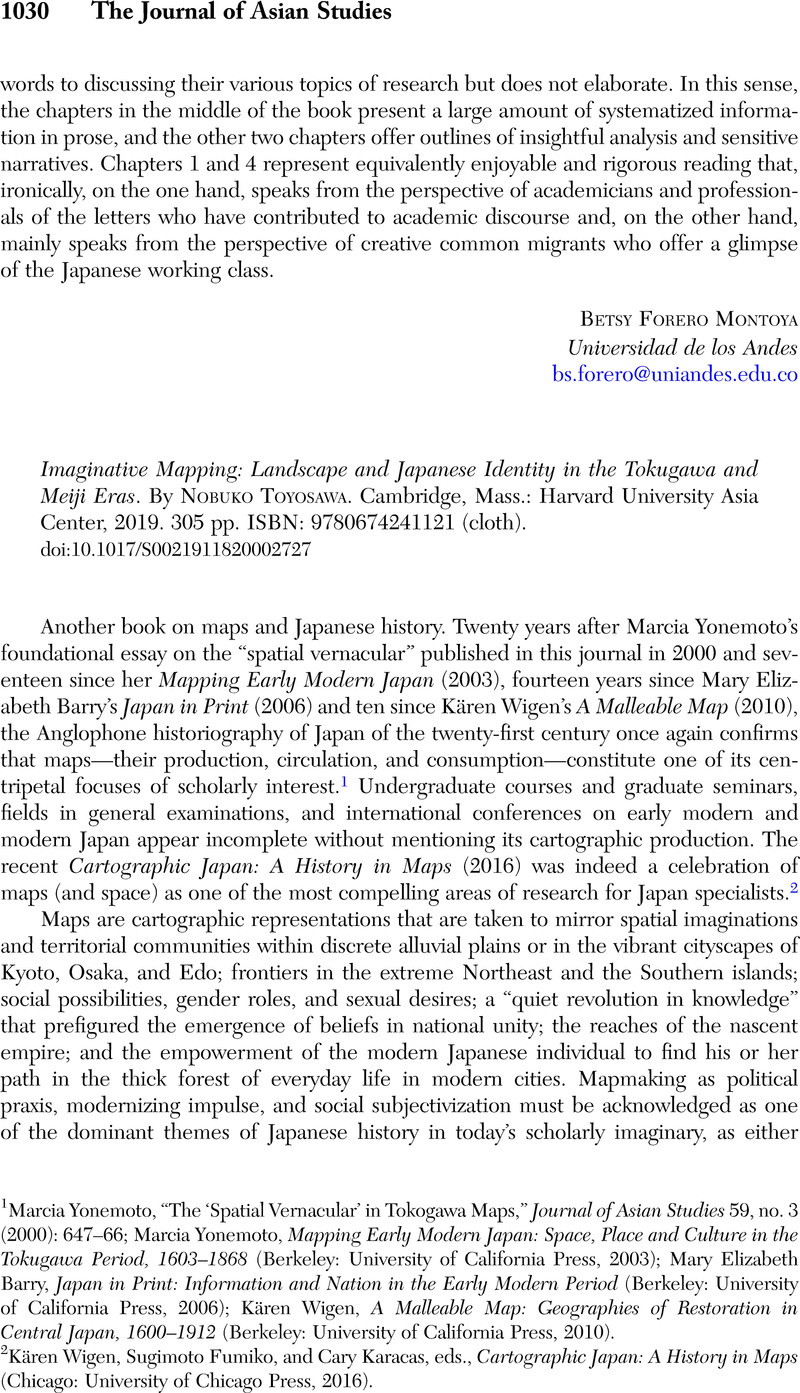No CrossRef data available.
Published online by Cambridge University Press: 16 December 2020

1 Yonemoto, Marcia, “The ‘Spatial Vernacular’ in Tokogawa Maps,” Journal of Asian Studies 59, no. 3 (2000): 647–66CrossRefGoogle Scholar; Yonemoto, Marcia, Mapping Early Modern Japan: Space, Place and Culture in the Tokugawa Period, 1603–1868 (Berkeley: University of California Press, 2003)CrossRefGoogle Scholar; Barry, Mary Elizabeth, Japan in Print: Information and Nation in the Early Modern Period (Berkeley: University of California Press, 2006)CrossRefGoogle Scholar; Wigen, Kären, A Malleable Map: Geographies of Restoration in Central Japan, 1600–1912 (Berkeley: University of California Press, 2010)CrossRefGoogle Scholar.
2 Wigen, Kären, Fumiko, Sugimoto, and Karacas, Cary, eds., Cartographic Japan: A History in Maps (Chicago: University of Chicago Press, 2016)CrossRefGoogle Scholar.